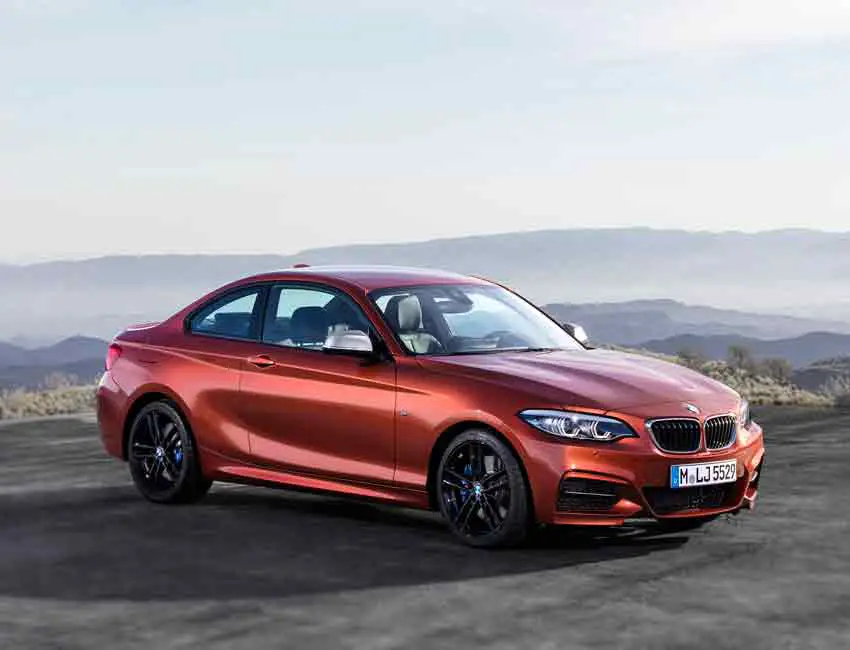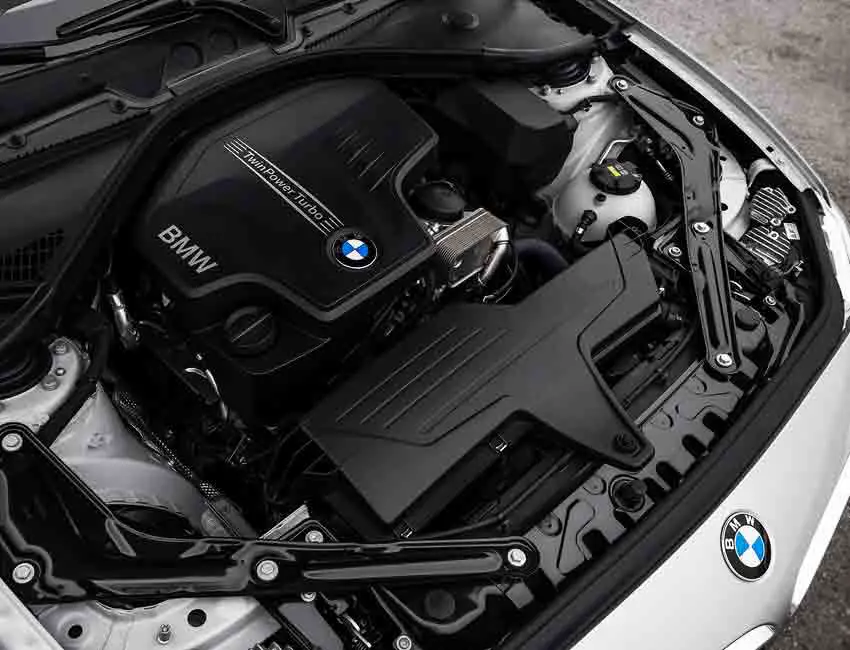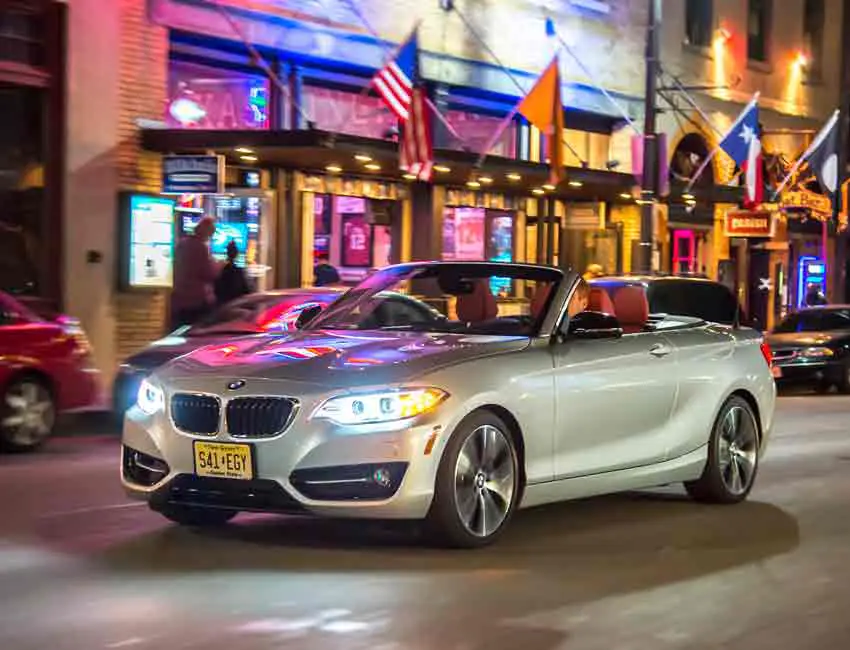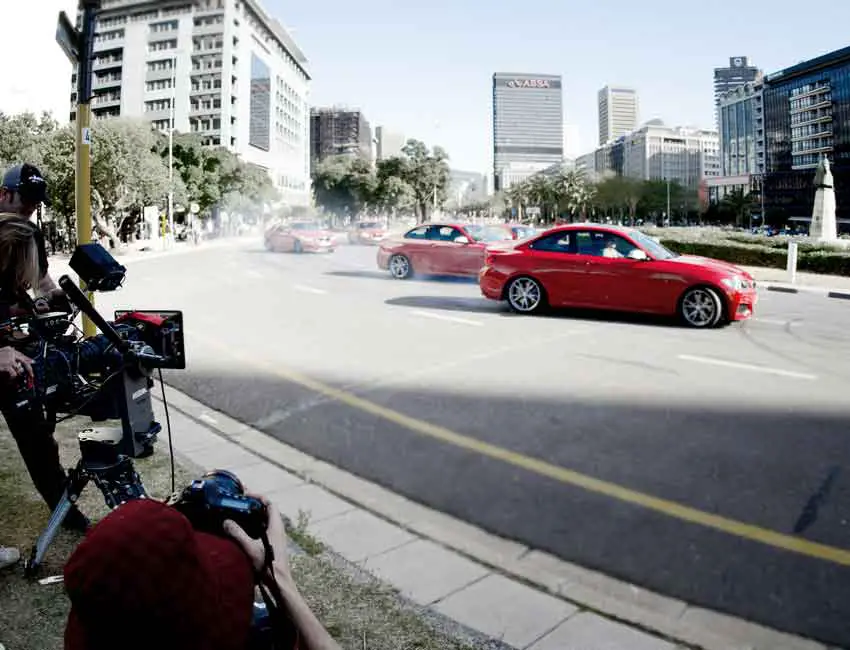The BMW 2 Series is a lot like the new kid on the block who made a noisy entrance.
In January of 2014, at the North American International Auto Show, BMW brought on a “newcomer” – the new BMW 2 Series Coupe 228i.
Debuted alongside the 2 Series was the M powered variant fitted with M Performance 3.0-liter, inline 6-cylinder. The new BMW M235i has outdone itself with its loaded torque. It surpassed its predecessor the BMW M1 Coupe and the last generation BMW M3. Talk about being the “black sheep” in the family.
The First-Generation BMW 228i Models
The first generation of the BMW 228i model lineup includes the following. Information regarding the M version can be found in the BMW M2 guide.
- 228i Coupe (2.0-Liter Inline 4-Cylinder, 240 HP Engine)
- 228i xDrive Coupe (2.0-Liter Inline 4-Cylinder, 240 HP Engine)
- 228i Convertible (2.0-Liter Inline 4-Cylinder, 240 HP Engine)
- 228i xDrive Convertible (2.0-Liter Inline 4-Cylinder, 240 HP Engine)
The Upgraded BMW 228i

The BMW 228i is a perfect sized sporting model in the premium sub-compact division. It packs just enough power without sacrificing driving comfort. In addition to the standard BMW amenities offered such as the iDrive, dual-climate control, and the optional Navigation with Touch Controller, the 2016 version receives more upgraded standard equipment from the prior year model.
BMW Sports Seats become standard in the cockpit, while the newly available Luxury Package (a $350 option) offers choices of wood or brushed aluminum trims and premium Dakota Leather upholstery at an additional cost (a $1,450 upgrade).
Furthermore, the rigid and athletic body design based on the forerunner 1 Series is awarded a five-star Euro NCAP crash test rating. Its safety equipment includes the front, knee, side and head airbags. Also, pedestrian protection is optimized by the front-end deformation zones.
A Brief History of the BMW 2 Series

The inspiration behind the BMW 2 Series was its infamous ancestor – the BMW 2002 was first introduced in 1968. The 2002 compact two-door Coupe was rated at a 100 HP with peak torque of 106 lb-ft, it Went from 0 to 60 mph in around 12.8 seconds. The agile Sports Coupe with its customized powertrain and chassis quickly became a star in the compact car segment. It was one of the signature BMW models that made a tremendous uproar and success in the auto industry in BMW’s early ages.
During the BMW 2002 era, the most impressive model was the BMW 2002 Turbo premiered at the Frankfurt Motor Show in 1973. This infamous model was the very first European turbocharged production version, and only 1,672 units were produced. The car was distinguishable from its flashy exterior racing stripes, flared wheel arches, and the distinctive rear spoiler.
The BMW 2002 Turbo boasted racing characteristics. Equipped with the Kuhnle, Kopp, and Kausch turbocharged engine, the model held 170 HP, 173 lb-ft of torque, and raced from 0 to 60 mph in just 7 seconds. It was the first turbocharged vehicle released in Europe. The end of production dawned during the 1970’s Oil Crisis.
The BMW 228i Engine

The BMW 2 Series is all about achieving an ideal balance between the agility of a compact-sized Coupe with the power of twin turbo. The BMW 228i Coupe received a 2.0-liter 4-cylinder TwinPower Turbocharged engine. It has a 240 HP output between 5,000 and 6,500 RPM and a peak torque of 255 lb-ft which is on tap between 1,250 and 4,500 RPM. The coupe goes from 0 to 60 mph in 5.4 seconds.
The TwinPower Turbo engine technology consists of a winning BMW power-formula: a Twin-Scroll turbocharging system, the High Precision Direct Injection system, Valvetronic Fully Variable Intake Valve regulation, and Double-VANOS variable camshaft control. Thanks to the unique chassis technology custom tuned to the engine output and the rear-wheel-drive configuration, driving efficiency was optimized without compromising driving comfort.
The BMW 228i Transmission
The entire BMW 2 Series family comes standard with the 8-Speed Sport Automatic Transmission and steering wheel paddle shifter pairing. BMW EfficientDynamics and Driving Experience Control are also part of the standard features. A 6-Speed Manual gearbox (a Performance Option) is available at no additional cost.
The Variable Sport Steering, M Sport Brakes, Adaptive M suspension as well as two variants of 18-inch Alloy Ferric Gray Wheels can be specified with the addition of the Track Handling Package (a $2,300 optional package) in the BMW 228i. We will talk about these performance add-ons in just a bit.
The 8-Speed Sport Automatic Transmission promises seamless gearshift. Combined with Launch Control as well as the addition of ECO PRO mode with coasting function, maximum energy saving and drive efficiency are achieved.
Utilizing the Driving Experience Control, COMFORT, SPORT, SPORT + and ECO PRO modes can be selected. According to BMW, the Driving Experience Control switch can also be used to modify the car’s accelerator mapping and steering characteristics as well as – depending on specification – the responses of the automatic transmission and the shock absorbers.
The BMW 228i Fuel Efficiency

The Preliminary EPA estimated fuel economies for the BMW 228i are within expectations:
- 23 city/35 highway/27 combined for the 8-Speed Sport Automatic Transmission
- 22 city/34 highway/26 combined for the 6-Speed Manual Transmission
Fuel savings are achieved through the standard BMW EfficientDynamics package which includes the Brake Energy Regeneration, on-demand operation of ancillary units, Electric Power Steering, an Optimum Shift Indicator, and the Auto Start/Stop function.
Even more fuel reduction can be achieved with the Active Driving Assistant, a $700 add-on from the Driver Assistance Plus option. Note, the addition of Driver Assistance Plus requires the mandatory selection of the $1,950 Technology Package and the $2,950 Premium Package.
Partnering with the BMW Navigation System Professional during ECO PRO mode, the system can calculate and analyze an ideal driving style to reduce gasoline intake. Alerts such as warnings of upcoming speed zone changes and potential stops ahead can be suggested to the driver for maximum fuel efficiency.
The BMW 228i Custom-Tuned Chassis
The sophisticated chassis technology developed for the BMW 2 Series consists of a double-joint spring strut front suspension with anti-roll bars and a five-link rear suspension. Like the transmission, the 2 Series chassis is specially tuned to the engine’s output to attain full efficiency.
The aluminum construction achieves a low center of gravity and contributes to the 50:50 perfect BMW weight distribution. The precisely engineered chassis helps to keep the drive comfortable while unleashing maximum performance potential.
A Greater Versatility of the BMW 228i Driving and Handling Personalization

According to BMW, here are the technical details that allowed the BMW 228i’s agile sporting aspect to shine through:
The standard DSC (Dynamic Stability Control) system comes complete with the Anti-Lock Braking System (ABS), DTC (Dynamic Traction Control), Cornering Brake Control (CBC), and Dynamic Brake Control (DBC). These tools are complemented by Brake Assist, Fading Compensation, Brake Drying function, and Start-Off Assistant.
In DTC mode, the response threshold of the driving stability system is set at a higher level. This allows the driver to make use of controlled slip through the driven wheels to pull away on snow, loose surfaces or when cornering.
In DSC Off mode, the Active Differential Brake (ADB- Sport) on the rear axle is activated. Here, a carefully calculated degree of braking force is applied under acceleration through tight bends, so that traction levels can be optimized.
The BMW 228i Performance Options
The M Sport Brakes in the BMW 228i
The M Sport Brakes are part of the $2,300 Track Handling Package. These brakes were originally the M performance brakes standard in the M235i, and they can now be added to the BMW 228i.
The U.S. model M Sport Brakes come in blue calibers with M logo indication. The setup consists of fixed calipers – four pistons in the front wheels and two pistons in the rear with comparably large brake discs. Additionally, the Original BMW Accessories can supply alternative M Performance Brakes with even larger, compound cross-drill discs and calipers painted in red, orange or yellow.
The Adaptive M Suspension in the BMW 228i
Adaptive M Suspension is part of the $2,300 Track Handling Package or as part of the $2,500 M Sport Package. The performance suspension system is fitted with electronically controlled shock absorbers. Vehicle height is reduced by approximately 10 mm.
The M Sport Suspension in the BMW 228i
M Sport Suspension is part of the $2,500 M Sport Package which boosts brake performance. The option could also be chosen from the Original BMW Accessories. The setup comes with extra-stiff spring and shock absorber settings. A 20-mm vehicle height reduction is achieved. A greater braking performance can be accomplished with this set of brakes which offers bespoke shock absorbers and shorter, red-painted coil springs for the BMW 2 Series lineup.
The BMW 228i is setting a new bar in the economic compact Coupe segment. It delivers a perfect concoction of affordability and driving power.


